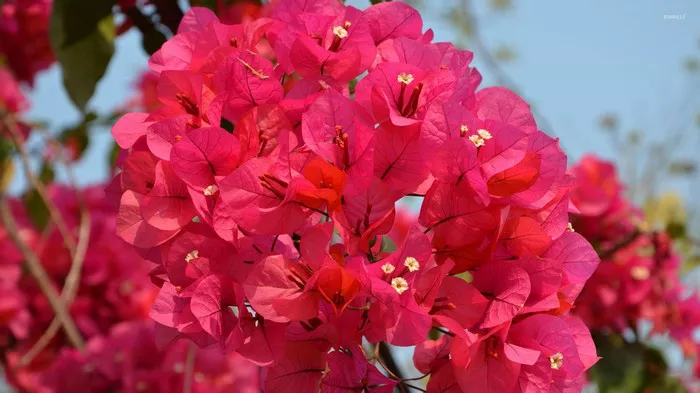Bougainvilleas are cherished for their vibrant bursts of color, transforming gardens and landscapes into stunning displays of natural beauty. However, achieving an abundance of flowers on your bougainvillea requires more than just planting and watering. Understanding the specific needs of this unique plant is crucial for encouraging prolific blooming. In this comprehensive guide, we delve into the key factors that contribute to a flourishing bougainvillea and unveil expert tips to help you unlock a spectacular display of blossoms.
Selecting the Right Location
The first step in maximizing blooms on your bougainvillea is ensuring it’s situated in an ideal location. These sun-loving plants thrive in full sunlight, so choose a spot that receives at least six hours of direct sunlight per day. While bougainvilleas can tolerate partial shade, they typically produce fewer flowers in such conditions. Additionally, ensure that the location provides adequate airflow to prevent the development of fungal diseases.
Optimal Soil Conditions
Well-draining soil is essential for bougainvilleas to thrive. They prefer slightly acidic to neutral soil with a pH range between 5.5 and 6.0. Amending heavy clay soil with organic matter such as compost or peat moss can improve drainage and fertility. Avoid over-fertilizing, as excessive nutrients can promote lush foliage growth at the expense of flowers.
Pruning Techniques
Pruning plays a crucial role in promoting abundant flowering in bougainvilleas. Regular pruning encourages branching and stimulates new growth, which leads to increased flower production. Focus on removing dead or diseased branches and trimming back excessive growth to maintain a balanced shape. Avoid heavy pruning immediately before the flowering season, as this may reduce the number of blooms.
Proper Watering Practices
While bougainvilleas are drought-tolerant once established, consistent watering is essential for promoting healthy growth and blooming. Water deeply but infrequently, allowing the soil to dry out between watering sessions. Overwatering can lead to root rot and hinder flowering, so it’s crucial to strike the right balance. Mulching around the base of the plant helps retain moisture and regulate soil temperature, further supporting optimal growth and blooming.
Fertilization Strategies
Applying a balanced fertilizer formulated for flowering plants can provide the nutrients bougainvilleas need to produce an abundance of blooms. Look for a fertilizer with a higher phosphorus content, as phosphorus promotes flower development. Begin fertilizing in early spring as new growth appears, and continue every 6-8 weeks throughout the growing season. Be cautious not to over-fertilize, as excessive nitrogen can stimulate foliage growth at the expense of flowers.
Managing Pests and Diseases
Pests and diseases can hinder bougainvillea growth and diminish flowering. Regularly inspect your plants for signs of infestation, such as aphids, mealybugs, or spider mites, and take prompt action to control them. Insecticidal soaps or horticultural oils are effective organic solutions for managing common pests. Additionally, practicing good sanitation, such as removing fallen leaves and debris, helps prevent the spread of diseases like powdery mildew and leaf spot.
Supporting Vertical Growth
Bougainvilleas are known for their climbing habit, and providing adequate support can encourage vertical growth and enhance flowering. Install trellises, arbors, or fences for your bougainvillea to climb, allowing the vines to reach their full potential. Regularly train and tie the branches to the support structure to prevent sprawling and promote upward growth. Vertical gardening not only maximizes blooming but also adds vertical interest to your outdoor space.
Choosing the Right Variety
Selecting the appropriate bougainvillea variety for your climate and landscape conditions can significantly impact flowering success. While most bougainvillea varieties are well-suited to warm, tropical climates, some cultivars are more cold-hardy and can tolerate cooler temperatures. Research different varieties and choose one that aligns with your specific growing conditions to ensure optimal performance and prolific blooming.
Conclusion
Achieving an abundance of flowers on your bougainvillea requires a combination of proper care, attention to detail, and understanding of the plant’s specific needs. By selecting the right location, providing optimal soil conditions, implementing pruning techniques, and practicing proper watering and fertilization, you can create an environment that encourages prolific blooming. Additionally, proactive pest and disease management, along with vertical support and variety selection, further enhance flowering success. With these expert tips and strategies, you’ll be well on your way to enjoying a spectacular display of bougainvillea blossoms in your garden or landscape.


